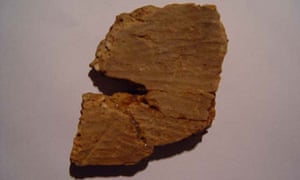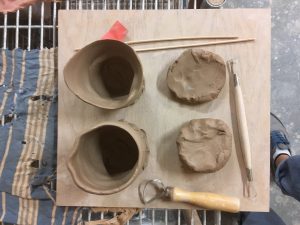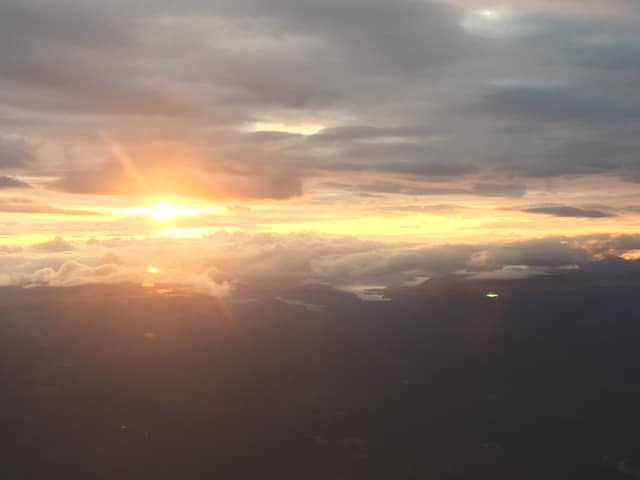Pottery is a huge world. Which before this I didn’t know. I thought it was a fun hobby people had and spent some time on making beautiful and useful things. It takes a lot of time, mental and physical effort, money, learning, understanding, and practice.
I have learned that I didn’t have the time this semester to become a full time pottery as I previously thought I would. That is ok I will come back to it when I have the space to do so because something else I learned is that….
I love pottery.
It is a very human practice, looking at the history of it, I learned it is an art practiced for thousands of years – the oldest pottery shard humans know exist is 20,000 years old. Clay is what we were made of, according to many different creation stories. It is an art that incorporates the four elements earth, water, air, and fire, which are the elements that for a long time what we were said to be as humans.
 The oldest pottery shard, found in China’s Jiangxi province that has been dated to be 20,000 years old. Read more.
The oldest pottery shard, found in China’s Jiangxi province that has been dated to be 20,000 years old. Read more.
Some of the key activities and terms that are specific to the art of pottery that I learned during my inquiry in pottery are:
- wedging
- wetting
- slabbing
- coiling
- throwing
- trimming
- firing
- sanding
- glazing
- ribs
- trimming tools
- kiln
The technology used for pottery has been around forever and has never changed. The pottery wheel and the Kiln are still necessary today to practice this art. Though the wheel has changed from being hand-spun to electrical, and kilns have gotten bigger and more industrialized.
Technology has helped me learn about pottery, whilst I didn’t have the time to go into the studio and practice. Being able to watch youtube videos, tv programs, look information up on the internet and read books was invaluable to my learning throughout this process.



Recent Comments